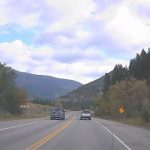Missoula, MT — U.S. Forest Service (USFS) officials recently shared critical insights into how scientific methods are integrated into wildfire management during a virtual forum, using the recent Bridger Range Fire as a case study. The event, held Friday, aimed to deepen public understanding of wildfire risk and preparedness in Montana’s high-risk areas.
Bozeman District Ranger Corey Lewellen began the session by recapping the events of the Bridger Range Fire, which had significant impacts on the local community. Lewellen provided a detailed account of the fire’s progression, the challenges faced by responders, and the steps taken to mitigate its effects. His remarks underscored the importance of wildfire preparedness at the community level and offered actionable advice for homeowners on how to reduce the risk of fire spreading to their properties.
Among the recommendations, Lewellen stressed the importance of maintaining clean gutters, mowing the lawn regularly, and removing combustible materials—such as firewood—around homes. He also advised homeowners to consider fuel reduction strategies, such as creating defensible space by clearing vegetation and other potential fire fuel in the areas surrounding their homes. These steps, Lewellen noted, can significantly decrease the likelihood of a home catching fire during a wildfire.
Tonja Opperman, Assistant Director of Fire Analytics for the USFS Intermountain Region, followed with a presentation on the scientific tools and technologies used to manage wildfires. Opperman discussed various systems employed to track weather patterns, monitor fire behavior, and predict the spread of fires using sophisticated modeling techniques. She explained that these tools help fire managers make informed decisions during an incident, allowing them to better anticipate the fire’s path and allocate resources effectively.
Opperman also addressed the wildfire risk faced by Bozeman, noting that the city has a higher risk of wildfires than 73% of communities in the U.S. She explained that wildfire risk is determined by both the probability and potential consequences of a fire, emphasizing that while it is impossible to predict the exact location and timing of the next wildfire, understanding the probabilities allows communities to better prepare.
“Risk is the probability and the consequence of uncertain events,” Opperman said. “We may not know where the next fire will be or when it will strike, but by understanding where it is most likely to occur, we can plan ahead and respond more effectively.”
The forum highlighted the importance of combining community preparedness with scientific data to mitigate the impacts of wildfires. As wildfires continue to pose a growing threat in many parts of the country, experts like Lewellen and Opperman stress the need for proactive measures at both the individual and community levels.
For Bozeman and other high-risk areas, the key takeaway from the presentation is clear: while wildfires are unpredictable, planning and preparation—driven by science and community involvement—are critical in reducing their destructive impact.



